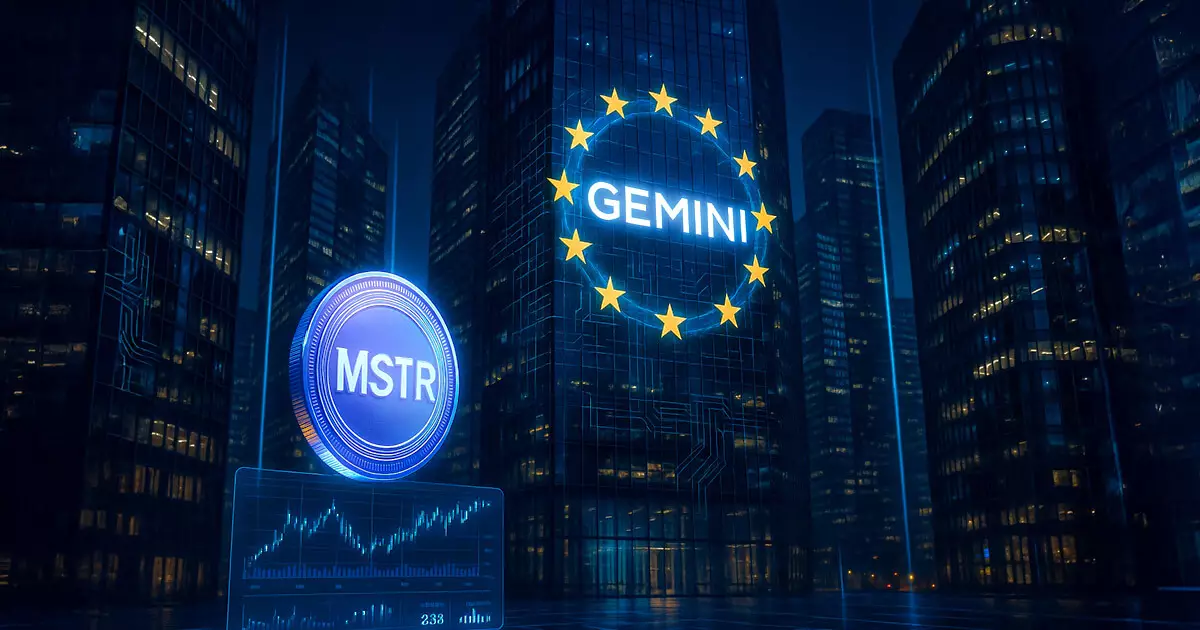Gemini’s recent debut of tokenized shares of Strategy (MSTR) in the European Union marks a significant attempt to bridge the oft-criticized gap between traditional stock markets and blockchain technology. On the surface, offering 24/7 access to U.S. equities via tokenized shares sounds like a game-changer for global investors, especially those constrained by traditional brokerage fees and geographic barriers. However, the promise of democratizing markets must be scrutinized beyond the PR gloss. Although the fractional ownership and seamless transaction capabilities are innovative, the reliance on blockchain-based solutions raises questions about regulatory clarity and the maturity of this ecosystem, particularly outside of tech-savvy or crypto-friendly environments.
Blockchain’s Potential, But Are We Overhyping Its Practical Benefits?
Tokenizing equities on platforms like Arbitrum leverages blockchain’s core strengths: transparency, instant settlement, and reduced intermediaries. Yet, the real-world efficiency gains might be overstated. Traditional stock markets have long relied on established clearinghouses and robust regulatory frameworks that, despite their flaws, provide investor protections not guaranteed on all blockchain platforms. The direct on-chain settlement touted by Gemini removes some friction but substitutes it with new complexities—how do investors reconcile blockchain custody risks with the relative security of traditional brokerage accounts? In many ways, the technology is moving faster than the regulations and consumer understanding needed to make these advantages broadly accessible and safe.
Global Access vs. Localized Realities
Gemini’s bold claim that “anyone in the world with a smartphone and internet connection” can participate is undeniably appealing. Yet, this enthusiasm should be tempered by the stark reality of varying financial regulations, taxation policies, and crypto acceptance across countries. Tokenized stocks might lower currency conversion costs and eliminate some intermediaries, but accessing these markets still hinges on local legal frameworks and connectivity infrastructure that remain inconsistent worldwide. More importantly, investors in less-developed markets might face new forms of risk, from cybersecurity to regulatory crackdowns, which have yet to be fully accounted for in this emerging model.
Institutional Interest: Catalyst or Compliance Quagmire?
Gemini’s positioning as a frontrunner in compliant tokenized stock offerings clearly appeals to institutional investors eager to harness blockchain’s promise for traditional securities. The involvement of firms like Dinari signals a maturing ecosystem, potentially driving broader adoption. However, institutional enthusiasm also brings heightened scrutiny from regulators and fiduciaries who demand not just innovation but reliability and clear asset custody. As these tokenized shares gain traction, the challenge will be balancing innovation with the entrenched compliance demands of financial markets—a tightrope Gemini and its peers must navigate carefully if they are to avoid regulatory backlash or reputational damage.
Modernizing Financial Rails: Vision Meets Reality
The integration of traditional equities with blockchain initiatives represents a bold vision to modernize how capital flows globally. Gemini’s approach, underpinned by tokenization, fractional ownership, and 24/7 liquidity, is attractive in a world eager for more inclusive financial systems. Still, the transition from conventional infrastructure to decentralized networks is not a seamless or quick one. Mass adoption depends on user education, regulatory harmonization, and technical reliability that have yet to be fully realized. Without addressing these foundational challenges, the rhetoric of “exporting U.S. equities across the globe” risks being more aspirational than actionable in the near term.
In sum, Gemini’s push into tokenized stocks is undeniably an important step forward, but it must be met with cautious optimism. The laudable effort to expand market accessibility hinges on bridging technical innovation with practical regulatory safeguards and realistic market uptake. Only then can the promise of tokenized equities move beyond novelty toward reshaping global financial inclusion.

